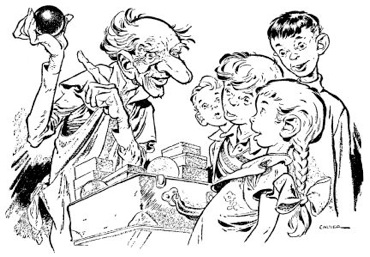Communication
Essentials
WHAT WENT WRONG AND HOW TO FIX IT
Living is communicating. Playing is communicating. Working is communicating. Everything you do in life, every action is communicating. The less you communicate the less alive you are. The more you communicate the more alive you are. In order to be more alive and/or help your clients be more alive, it is necessary to fully understand and use all the essentials of communication.
THE CRF TRIANGLE
Communication/Results/Feelings
Good communication usually tends to enhance most situations. But, that’s not all.
When a person communicates well he tends to succeed more. When he succeeds he tends to feel good. When he feels good he tends to communicate more and better. This circle is self energizing and life-giving.
However, when a person communicates poorly he tends more to fail. When he fails he tends to feel badly. When he feels bad he tends to communicate less and more poorly. This provides negative motion and drags him further down.
It is a vicious circle. To get “up” and stay “up” it is necessary to communicate well.
COMMUNICATION ESSENTIALS
Communicating is something like driving a car. In order to drive a car from here to Baltimore, there are certain things the car has to have, absolutely. These are essentials. An engine, a steering system, wheels, an electrical system, fuel system, cooling system, brakes, gas. If any one of these essentials is missing you can’t get to Baltimore.
The same holds true with communication. There are certain essentials that are necessary for communication to work. If any one of them is faulty, communication doesn’t work.
There are as many things that can go wrong with communication as can go wrong with your car. To be a good communicator, you have to be a good communication mechanic, you have to know the essentials. If you don’t know the essentials and are not a communication mechanic, you had better be very tolerant of lousy communication, because that is what you will experience.
So, get very familiar with the essentials. Make sure there is air in the tires and gas in the tank and that all systems are working, especially the indicator dials and warning lights.
HOW TO FIX IT
First, you have to find out what is wrong. You have to raise the hood and look inside.
If there is a problem in communication, the source of the problem can be found rather quickly by checking over the essentials.
A list of the essentials follows with sample questions showing how they are used.
Then, a full First Aid Survey provides you with a time-proven tool to help locate and fix specific problems. A full, and detailed, explanation of how to use the survey is provided.
The First Aid Survey checklist covers various aspects of each of the essentials, is very easy to use, and works very rapidly. Using it, you can quickly pinpoint exactly what communication difficulty is causing a problem. The subject has only to answer “Yes, Maybe or No” to the various questions. You sift through the essentials rapidly, find the broken part or parts, and deal with them as you choose.
ESSENTIALS
Presence: Willingness to be there, also willingness for others to be there also.
Have you ever tried to talk with someone who didn’t want
to be there?
Purpose: Having a purpose, want, or goal.
Have you ever wondered what someone was getting at?
Replication: Perceiving communication without alteration.
Have you ever found out that wasn’t what he meant at all?
Give And Take: Mutual participation in a two-way interaction.
Have you ever had trouble getting a word in?
Source: Instigating a communication and being responsible for what is communicated.
Has someone ever refused to communicate or denied having said something?
Acceptance: The willingness to be affected or experience change.
“Have you ever talked with someone who “didn’t want to hear it” or was defending his position?
Awareness: Directing one's own attention as well as other people's attention.
“Have you ever tried to talk with someone who’s attention wandered?”
Duration: The time it takes for a communication to happen.
“Has someone ever been so abrupt you didn’t have time to figure it out?”
Confirmation: Letting the other person know the communication was received.
“Have you ever wondered if someone actually heard you?”
Handling Digressions: Recognizing digressions and acknowledging them without getting sidetracked.
“Have you known someone who constantly went off on tangents?”
Truth: Telling it the way it is. False communication is only pretended communication.
“Has anyone ever lied to you?”
THE SOLUTION
Find out what is going on! When communication is not working, find out what’s wrong. Then do something about it. Which of the essentials is broken or missing? Find the loose wire. Fix the flat. Put gas in the gas tank. You can’t really get anywhere until you do.
On the next page is a survey we have prepared especially for you. Like a pilot you can go through each point, and easily find exactly what is wrong in any communication situation. You probably already know some of them. It is the ones you don’t know that block you---and will continue to do so until you discover them.
To use the Survey do the following in order, 1. Click this link, 2. Print out the page, 3. Ask yourself or your client/friend the questions, 4. Mark the questions where the answer was “yes”. 5. Then, go back over the “yes” answers. It should be fairly obvious what to do about it.
To learn more about Communication Essentials email me at jbelotte@mac.com
Also see Survey Helping Control Communicator

